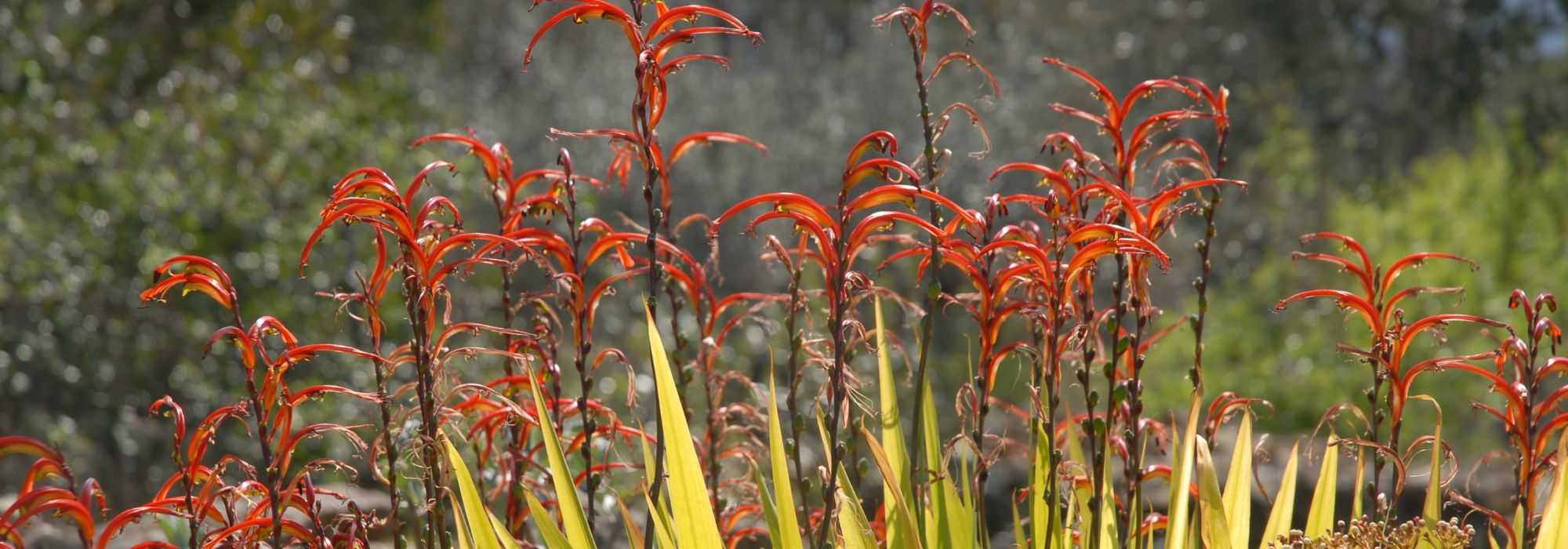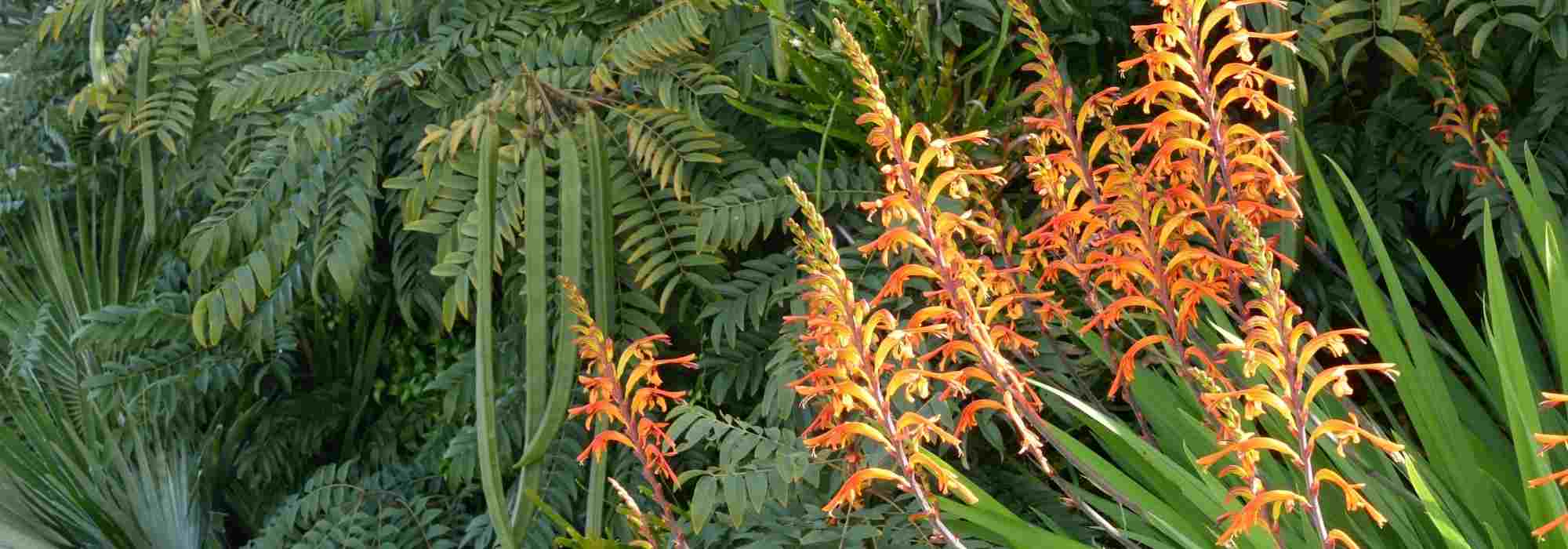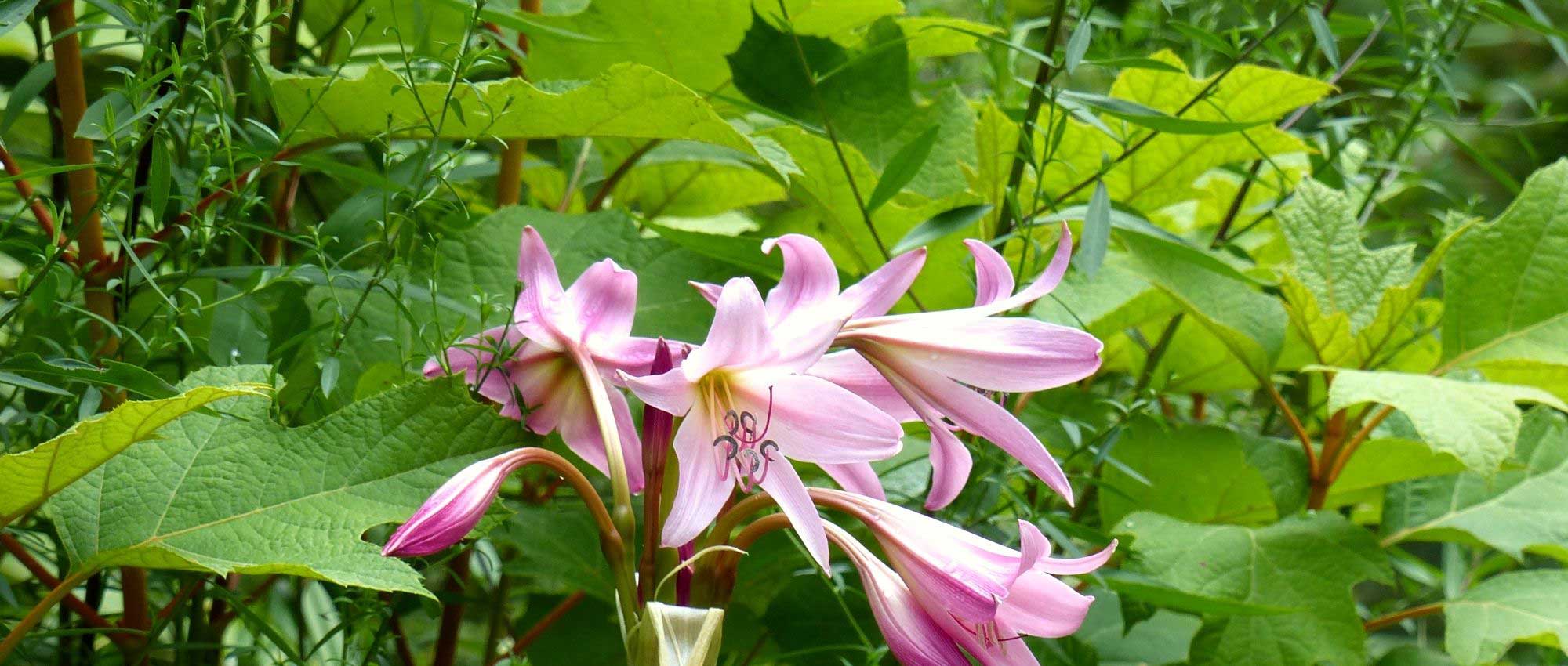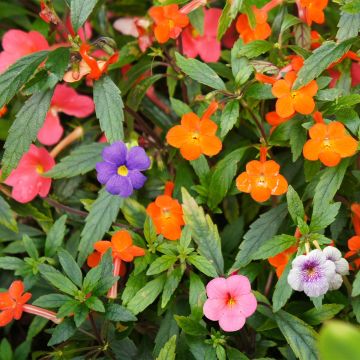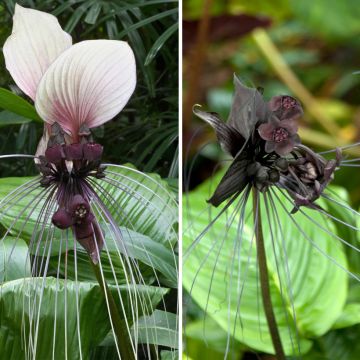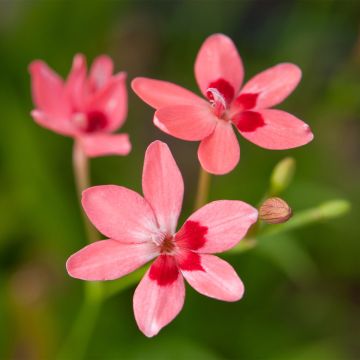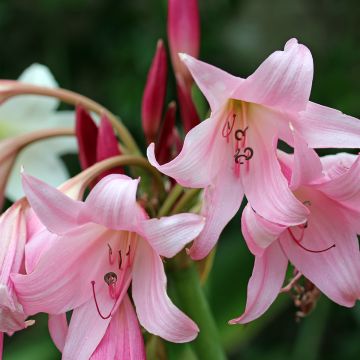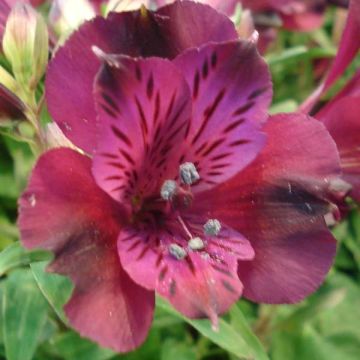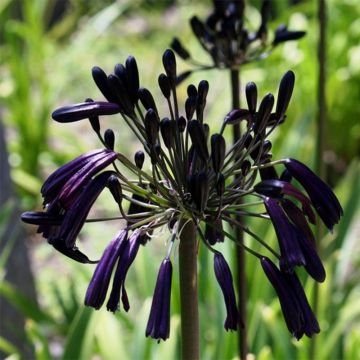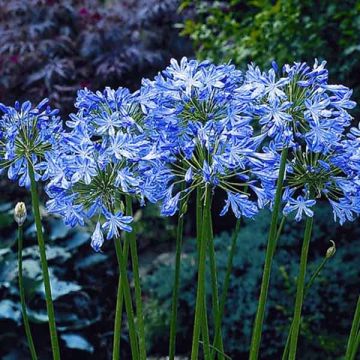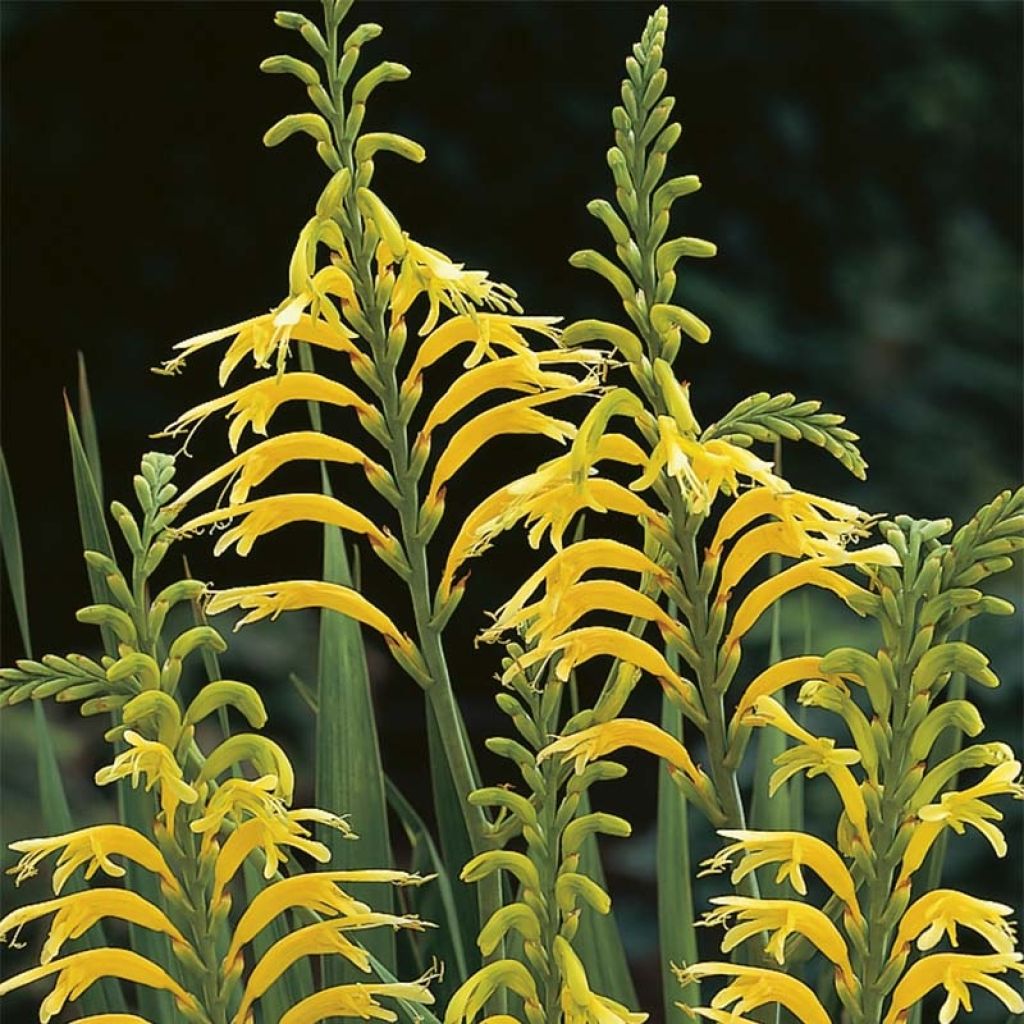

Chasmanthe floribunda Duckittii - African Flag
Chasmanthe floribunda Duckittii - African Flag
Chasmanthe floribunda Duckittii
African flag, Cobra lily
They had beautiful leaves and then we had a -3 and nothing left! I hope this time will be the right one because the foliage was more than promising for beautiful plants.
Maryline , 12/02/2024
Special offer!
Receive a €20 voucher for any order over €90 (excluding delivery costs, credit notes, and plastic-free options)!
1- Add your favorite plants to your cart.
2- Once you have reached €90, confirm your order (you can even choose the delivery date!).
3- As soon as your order is shipped, you will receive an email containing your voucher code, valid for 3 months (90 days).
Your voucher is unique and can only be used once, for any order with a minimum value of €20, excluding delivery costs.
Can be combined with other current offers, non-divisible and non-refundable.
Home or relay delivery (depending on size and destination)
Schedule delivery date,
and select date in basket
This plant carries a 6 months recovery warranty
More information
We guarantee the quality of our plants for a full growing cycle, and will replace at our expense any plant that fails to recover under normal climatic and planting conditions.

Would this plant suit my garden?
Set up your Plantfit profile →
Description
Chasmanthe floribunda 'Duckittii' is a beautiful plant with yellow flowers. This South African plant is related to crocosmias. Like the latter, it develops from a corm into a beautiful dense and upright clump from which robust floral stems emerge. Its flowers are finer and appear early in spring. Much better adapted to Mediterranean-type climates than crocosmias, Chasmanthe floribunda is easily cultivated in the ground on the Mediterranean coast and in beds with other plants with staggered flowering. Elsewhere, it can be used to create beautiful pots that can be protected from frost in winter. Alternatively, the corms can be planted in spring and dug up before the first frosts. The plant will then flower in summer.
Chasmanthe floribunda, sometimes called African Flag, belongs to the Iridaceae family. This botanical species is native to the Cape region in South Africa. 'Duckittii' is a rare form found only in a small area near the town of Darling in the Western Cape. It is an herbaceous perennial plant with an underground storage organ called a corm. This corm dies below -5°C (23°F) and the foliage is destroyed as soon as it freezes. In nature, its vegetation emerges from the ground in autumn with the return of rain, in the form of a clump of stiff and upright linear leaves that are light green in colour. Flowering takes place in March-April for 3 to 4 weeks, then the foliage dries up at the end of spring or early summer. The plant then enters a period of dormancy to escape the heat and drought in dry soil. It reaches about 1m (3ft) in height and 40cm (16in) in width. Its leaves measure 30 to 45cm (12 to 18in) in length. The yellow-green flattened flower stalks bear many finely tubular flowers, 8cm (3in) long. These pure yellow blooms are arranged in zigzags in two rows. On each flower, the very long upper petal releases long stamens with golden anthers. After pollination by insects, capsules containing seeds are formed which can spontaneously reseed under favourable conditions.
These plants will easily replace crocosmias in frost-free mild gardens where they will require little maintenance. Elsewhere, they can be used to create beautiful flowering pots from spring. These vigorous but hungry plants are easy to grow in containers. They can be planted in semi-shade or full sun. Plant them in groups of 10 corms, in light, fertile soil that remains moist throughout their growth period. Their warm-toned blooms form beautiful combinations with annuals (love-in-a-mist and poppies) and blend well in exotic settings, with agapanthus taking over in summer. They always look wonderful with garden irises, grasses, and plants with grey foliage.
Chasmanthe floribunda Duckittii - African Flag in pictures


Plant habit
Flowering
Foliage
Botanical data
Chasmanthe
floribunda
Duckittii
Iridaceae
African flag, Cobra lily
Cultivar or hybrid
Planting and care
Chasmanthe floribunda can be grown in open ground in warm regions spared from heavy frosts, mainly on the coast. In this situation, plant it in early autumn. The corm is destroyed at -5°C (23°F) and the foliage, which develops in autumn and winter, will be destroyed as soon as it freezes. Elsewhere, it should be planted in spring in a large pot, which allows it to be protected from frost in winter. Alternatively, it can be grown like a gladiolus planted after the last frost and the corms dug up in autumn, to be stored in a dry and cool place. It will then bloom in summer.
Plant the corms at a depth of 8 to 9cm (3 to 4in). The growing medium should be light, well-drained and rich, and remain slightly moist throughout the growth and flowering period (from November-December until the end of May, when the foliage starts to turn yellow). On the other hand, the plant should be kept dry after flowering, which corresponds to its dormant period. Opt for good quality potting soil mixed with a little sand. Overwinter your potted plant in a bright, cool, but frost-free place.
Planting period
Intended location
Care
Planting & care advice
-
, onOrder confirmed
Reply from on Promesse de fleurs
Similar products
Haven't found what you were looking for?
Hardiness is the lowest winter temperature a plant can endure without suffering serious damage or even dying. However, hardiness is affected by location (a sheltered area, such as a patio), protection (winter cover) and soil type (hardiness is improved by well-drained soil).

Photo Sharing Terms & Conditions
In order to encourage gardeners to interact and share their experiences, Promesse de fleurs offers various media enabling content to be uploaded onto its Site - in particular via the ‘Photo sharing’ module.
The User agrees to refrain from:
- Posting any content that is illegal, prejudicial, insulting, racist, inciteful to hatred, revisionist, contrary to public decency, that infringes on privacy or on the privacy rights of third parties, in particular the publicity rights of persons and goods, intellectual property rights, or the right to privacy.
- Submitting content on behalf of a third party;
- Impersonate the identity of a third party and/or publish any personal information about a third party;
In general, the User undertakes to refrain from any unethical behaviour.
All Content (in particular text, comments, files, images, photos, videos, creative works, etc.), which may be subject to property or intellectual property rights, image or other private rights, shall remain the property of the User, subject to the limited rights granted by the terms of the licence granted by Promesse de fleurs as stated below. Users are at liberty to publish or not to publish such Content on the Site, notably via the ‘Photo Sharing’ facility, and accept that this Content shall be made public and freely accessible, notably on the Internet.
Users further acknowledge, undertake to have ,and guarantee that they hold all necessary rights and permissions to publish such material on the Site, in particular with regard to the legislation in force pertaining to any privacy, property, intellectual property, image, or contractual rights, or rights of any other nature. By publishing such Content on the Site, Users acknowledge accepting full liability as publishers of the Content within the meaning of the law, and grant Promesse de fleurs, free of charge, an inclusive, worldwide licence for the said Content for the entire duration of its publication, including all reproduction, representation, up/downloading, displaying, performing, transmission, and storage rights.
Users also grant permission for their name to be linked to the Content and accept that this link may not always be made available.
By engaging in posting material, Users consent to their Content becoming automatically accessible on the Internet, in particular on other sites and/or blogs and/or web pages of the Promesse de fleurs site, including in particular social pages and the Promesse de fleurs catalogue.
Users may secure the removal of entrusted content free of charge by issuing a simple request via our contact form.
The flowering period indicated on our website applies to countries and regions located in USDA zone 8 (France, the United Kingdom, Ireland, the Netherlands, etc.)
It will vary according to where you live:
- In zones 9 to 10 (Italy, Spain, Greece, etc.), flowering will occur about 2 to 4 weeks earlier.
- In zones 6 to 7 (Germany, Poland, Slovenia, and lower mountainous regions), flowering will be delayed by 2 to 3 weeks.
- In zone 5 (Central Europe, Scandinavia), blooming will be delayed by 3 to 5 weeks.
In temperate climates, pruning of spring-flowering shrubs (forsythia, spireas, etc.) should be done just after flowering.
Pruning of summer-flowering shrubs (Indian Lilac, Perovskia, etc.) can be done in winter or spring.
In cold regions as well as with frost-sensitive plants, avoid pruning too early when severe frosts may still occur.
The planting period indicated on our website applies to countries and regions located in USDA zone 8 (France, United Kingdom, Ireland, Netherlands).
It will vary according to where you live:
- In Mediterranean zones (Marseille, Madrid, Milan, etc.), autumn and winter are the best planting periods.
- In continental zones (Strasbourg, Munich, Vienna, etc.), delay planting by 2 to 3 weeks in spring and bring it forward by 2 to 4 weeks in autumn.
- In mountainous regions (the Alps, Pyrenees, Carpathians, etc.), it is best to plant in late spring (May-June) or late summer (August-September).
The harvesting period indicated on our website applies to countries and regions in USDA zone 8 (France, England, Ireland, the Netherlands).
In colder areas (Scandinavia, Poland, Austria...) fruit and vegetable harvests are likely to be delayed by 3-4 weeks.
In warmer areas (Italy, Spain, Greece, etc.), harvesting will probably take place earlier, depending on weather conditions.
The sowing periods indicated on our website apply to countries and regions within USDA Zone 8 (France, UK, Ireland, Netherlands).
In colder areas (Scandinavia, Poland, Austria...), delay any outdoor sowing by 3-4 weeks, or sow under glass.
In warmer climes (Italy, Spain, Greece, etc.), bring outdoor sowing forward by a few weeks.






























